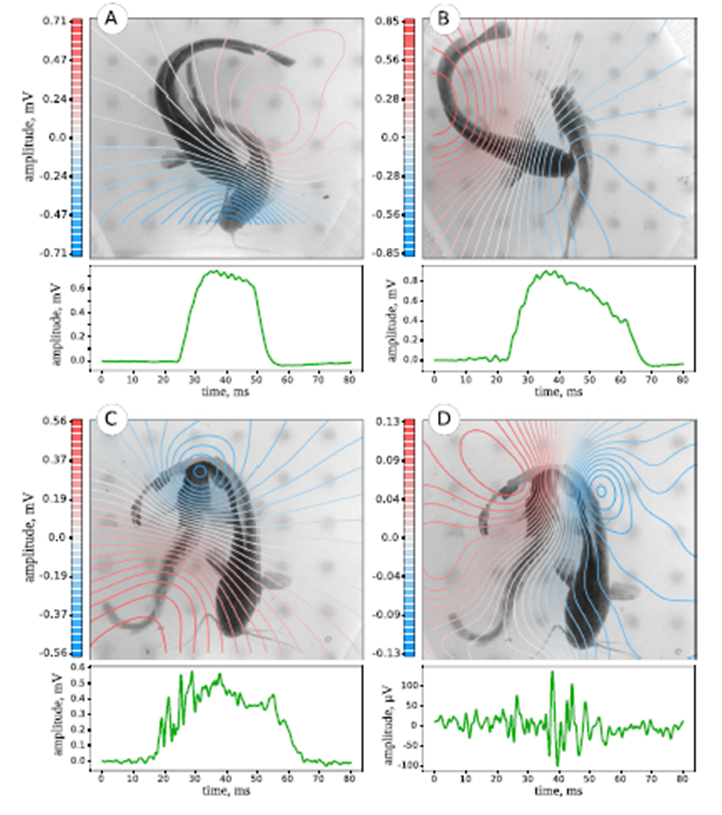
The staff of the Laboratory of Lower Vertebrate Behavior at the A.N. Severtsov Institute of Ecology and Evolution of the Russian Academy of Sciences has developed a method and manufactured the first working version of a complex for visualizing electric fields of aquatic animals. Electric images are constructed based on the simultaneous measurement of electric potentials on a matrix of electrodes placed on the bottom of an aquarium. Then, using a specially developed software package, these images are precisely combined with the corresponding frame of the video recording, and patterns of electric events are constructed.
“The method and programs allow not only to construct images, but also to synthesize video clips that allow observing the dynamics of electric events and the corresponding behavior of aquatic animals, including at high deceleration,” said Vladimir Mendelevich Olshansky, Senior Researcher at the IEE RAS, Doctor of Physical and Mathematical Sciences.
Digitization is carried out at a frequency of up to 50 kHz for each channel, which allows tracking the dynamics of very short events, for example, lasting several milliseconds.
The methodology is published in Behavior Research Methods (2024) 56:4255–4276
Text and video clips are available at the link.
